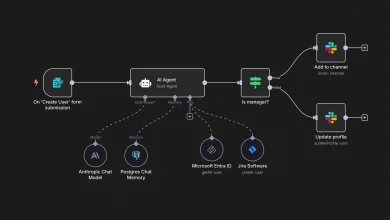
A long-time builder-operator in non-opioid pain care, Ben Kasle isn’t deploying AI himself—but he’s watching where it’s headed, and what will actually free doctors to practice medicine.
When I met Ben Kasle, he didn’t start with algorithms. He started with people. “Pain steals moments,” he told me. “Our job is to give them back.” As the builder-operator who leads Elite Pain Doctors, an integrated, non-opioid network in Ohio and Indiana, Ben Kasle has made a career out of aligning MDs, NPs and chiropractors on single, conservative care plans and expanding access to balanced options beyond the old binary of “medication or surgery only.” His lodestar remains simple: “less pain, more life.”
In 2025, every conversation about healthcare seems to loop back to artificial intelligence. Ben Kasle doesn’t rush to brandish shiny tools; he’s quick to stress that Elite Pain Doctors isn’t rolling out AI. His vantage point is that of a long-term operator watching the trend line. “I’m an observer here,” he said. “I want technology that frees the clinician to practice medicine, not technology that turns the clinician into an IT administrator.”
That stance makes him an unusually clear-eyed guide through a noisy moment. What, exactly, is ready, and what’s merely promising in AI for pain?
Objective Assessment, Beyond “How Much Does It Hurt?”
Assessment is getting less subjective. The industry is inching toward objective measurements that complement self-reported pain scales. One path runs through the brain: PainQx has been developing a machine-learning platform that classifies EEG signals into pain-intensity tiers, a direction that’s drawn military and clinical interest.
“By way of example, there is a startup focused on EEG-derived pain detection to reduce guesswork at the bedside,” Ben Kasle said. “That kind of signal, if validated and integrated well, could change triage and follow-up.”
Another path runs through the eye. Companies emerging from pediatric research labs have built handheld devices that read pupillary responses to controlled stimuli—the so-called “nociometer.”
The aim is a fast, objective read on nociception that could support decisions in the ED, post-op units or long-term care. “That’s interesting for patients who can’t communicate pain reliably,” Kasle noted, pointing to ongoing development efforts and grants backing pupillometry tools.
A third wave, strikingly, just crossed a regulatory threshold: in October, PainChek announced an FDA De Novo grant for an AI-enabled pain assessment tool in U.S. long-term care, using automated facial analysis to score pain in adults with limited communication.
“Regulatory movement matters,” Ben Kasle said. “It tells you the signal is maturing from the lab to real-world workflow.”
From Imaging Suites to the Block Room
Guidance at the bedside is getting smarter. In procedural pain, AI is creeping from radiology into the block room. Research groups are training models to label anatomy on ultrasound and even to guide regional anesthesia, a potential boon in places where expertise is scarce.
“Think about nerve blocks in the ER,” Kasle said. “If AI can annotate structures on an ultrasound image in real time, you raise the floor on safety and access.”
Recent reviews catalog that trajectory, and U.S. military clinicians with academic partners are piloting AI-and-robotics concepts to assist nerve blocks in austere settings—an example of the “assist, not replace” theme he keeps returning to.
Earlier, Homeward, and Personalized
Care is moving earlier and homeward. Ben Kasle is adamant that technology earns its keep when it nudges care upstream, not when it adds clicks. He’s watching wearables and neuromodulation closely, especially systems that personalize stimulation (TENS/EMS or other noninvasive signals) with machine learning to a patient’s day-to-day patterns.
“By way of example, there’s a crop of companies marrying adaptive stimulation with real-time analytics,” he said. “If they can predict flare-ups and modulate therapy before pain peaks, you’re finally getting proactive.”
Early-stage studies and reviews underscore the promise of AI-tuned electrostimulation for chronic pain; the space is crowded with neurotech entrants, but the throughline is individualized dosing guided by data rather than averages.
“It’s the distribution of attention that changes outcomes.”
Let the Doctor Be a Doctor
Let the doctor be a doctor. If there is a refrain to Ben Kasle’s view of technology, this is it. He wants clinicians unshackled from low-value tasks. In his telling, the most credible AI applications are the ones that give doctors back their minutes: automated documentation; triage models that route routine MSK cases to digital front doors; and remote monitoring that surfaces the handful of patients who actually need a same-day call.
“It’s the distribution of attention that changes outcomes,” he said. He points to the U.K., where the NHS greenlit an AI-run physiotherapy service last year to cut MSK waits.
“Agree or disagree with the design, the pressure point is real: not enough clinicians, too much admin. The winning tools will reallocate time to examination, explanation and decision-making.”
The Operator’s Caveat
That caveat—winning tools—reveals the operator behind the rhetoric. Ben Kasle isn’t smitten with proofs-of-concept.
He wants workflow truths: will a model integrate with existing ultrasound carts? Does a facial-analysis app run on a standard tablet and feed a chart note, or does it live in a silo? Can a wearable’s risk score trigger a call list that a nurse actually works from? And what about liabilities, data governance and false-positive fatigue?
The most comprehensive reviews of AI in pain medicine echo his caution: integration, validation and equity are the real hurdles. “If implementation adds clicks, you’ve lost the room,” he said. “If it reduces uncertainty and administrative drag, you’ll have line-level adoption.”
A Pragmatic Middle Lane
Where does this leave the entrepreneur who built a network around conservative, non-opioid care and a surgery center in Southwest Ohio to broaden choices? In a pragmatic middle lane. Ben Kasle believes the best uses of AI will amplify the core tenets that already work: a coordinated, single-plan approach across disciplines; earlier identification of risk; objective adjuncts to subjective pain reports; and judicious use of procedures that restore function.
“In pain, the goal is not a dashboard,” he said. “The goal is a school pickup you can actually do, a shift you can finish, a walk you can take.”
Firewall, By Design
Crucially, he keeps a firewall between the trend and his own operations. “To be clear,” Ben Kasle said, “Elite Pain Doctors is not deploying AI. I’m describing where I think the field is headed. Our responsibility is to measure twice, cut once — and only adopt tools that demonstrably help clinicians spend more time being clinicians.”
It’s a characteristically unflashy answer from someone who has scaled by insisting that collaboration and disciplined execution matter more than branding. But it also reads as a challenge to the AI vendors now flooding pain medicine: build for the exam room, not the slide deck.
Back to the North Star
As we wrapped, Ben Kasle returned to that north star.
“If a tool helps a patient move, work and re-join the moments pain took away, and helps the doctor focus on the human in front of them, it has a place,” he said.
“Everything else is a distraction.” In an era of exuberant promises, Ben Kasle’s commentary is, in the best sense, conservative: keep what works, prove what’s new, and above all, let the doctor be a doctor.
About Ben Kasle
Ben Kasle leads Elite Pain Doctors, an integrated, non-opioid pain-management network serving Ohio and Indiana. A builder-operator at heart, he combines clinical collaboration (MDs, NPs, and chiropractors aligning on a single care plan) with disciplined operations and finance to scale access to conservative, outcomes-driven care. Under his leadership, Elite expanded its footprint and capabilities, including the Southwest Ohio Pain Management Surgery Center, to give patients a balanced alternative to “medication or surgery only” decisions. Ben’s north star is simple: “less pain, more life,” restoring daily function so people can move, work, and rejoin the moments pain took away.
Follow Ben’s Journey



